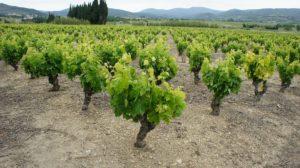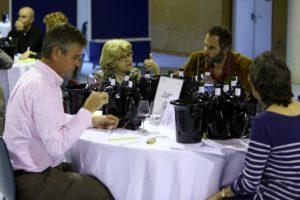Are our palates changing as much as our planet?
It doesnt really matter, because the Rosnay Icon Triple Blend is taking a new direction anyway.
In winter 2013, we (Sam and Simone and the kids) visited France, to study organic wine and viticulture in a hot climate like ours, as well as to catch up with distant cousins and enjoy the heat of the Southern Rhone, Languedoc and Roussillon – some of the hottest wine regions of France.

The trip was a game changer for me, having planted the Rosnay vineyard with my parents Richard and Florence in 1997-2000 with the classic Aussie staples of Shiraz (8ha), Cabernet (4ha), Merlot (2ha), Chardonnay (3.75ha) and Semillon (2ha).
Later we also planted 0.5ha of Mourvedre, as a small experiment of a few hundred vines, and by the end of the drought (and all the talk of climate change making it only hotter and drier here), the vines were some of the best performers in the vineyard and produced the first Rosnay Organic Freedom Preservative Free Red as the sole varietal in 2012.
However in France, we discovered the virtues not only of Mourvedre, but also Grenache, and understood why the classic Grenache Shiraz Mourvedre (GSM) blend is gaining popularity in Australia (eg, Wirra Wirra, Grant Burge etc as so well summarised by Oz Wine Review). The three varieties are perfect partners for wines that are not heavy and thick, but aromatic, vibrant, silky, bright and lingering.

And not only that, but all around the South of France you find old plots of Grenache and Mourvedre (as well as other varieties like Carignan and Cinsault) that are over a century old, unirrigated and amazingly suited to the windy, hot, dry and often droughty conditions of the South.
So back in Australia the following winter, we made the big call to change the direction of Triple Blend. For too many years we had struggled with Merlot – a variety mainly grown in the milder and moister Bordeaux region of France. Merlot does perform well in some regions including Orange and South Australia, but here we found it a struggle with organic methods, as the vine needed too much water and nutrients and competed poorly with weeds.
The 2014 vintage was that block’s last. Tom Stephens, of VineSight, was called in. The vines were removed in less than a day by a troup of bobcats, and over the next 3 months the weeds were attacked in earnest with the mower, the mechanical weeder from Cowra Estate, and the hoe. In October the ground was ready for the new residents – Grenache. Two clones were planted – the classic “Heritage” variety from South Australia, and a new clone recently imported by Yalumba from France.
The vines had a great season with the good January rains and by March were around 50% “on the wire” – meaning they are big enough to be “headed” and cable tied to the high cordon wire (120cm). By February 2016 we expect to be hand picking our very first Grenache, and after blending with our existing Shiraz and Mourvedre, releasing our first ever GSM Triple Blend by the end of the year!
The Merlot wasnt the only variety to lose some ground in 2014 – we also pulled out half of our Semillon, for similar reasons, and planted Vermentino. We are also in the line get our hands on some Carignan and Cinsault, just a few hundred vines, to add more complexity to our reds. But this is all the subject of a future post!